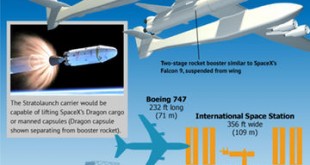In the past 100 years, attacking forces have used a diverse array of weapons to target airfields, including aircraft, missiles, naval guns, artillery, mortars, rockets, satchel charges, and small arms Attacker objectives have also been diverse, including destruction of aircraft and equipment, inflicting casualties, denial of use, capture of the base, and harassment of defenders. Emerging threats include precision standoff systems such as long-range, highly accurate, conventional missile (both ballistic and cruise) are presenting new challenges to air base operations.
“A2/AD capabilities enabled by integrated air defense systems that include advanced fighters, advanced surface-to-air missiles, active and passive cuing systems, and directed energy weapons” make many U.S. fixed facilities vulnerable to attack in ways hard to imagine a decade ago, according to Harry Foster from National Defense University. “These strategies are intended to inhibit U.S. political and operational access to and disrupt U.S. operations in key regions. A central feature of adversary anti-access strategies is capabilities designed to disrupt the operation of U.S. and partner-nation forward air bases,” says RAND report.
The effects of these attacks may vary greatly. At one extreme, smaller, less accurate attacks conducted once or sporadically against hardened bases might result in modest aircraft or personnel losses and temporary damage to airfield infrastructure at one or a few bases. Such attacks might disrupt U.S. operations for a few hours at one or a few bases but would be unlikely to materially affect the prosecution of the war. At the other extreme, larger and accurate attacks sustained over time against a less hardened posture could be devastating, causing large losses of aircraft and prolonged airfield closures.
When an airfield is attacked and rendered unusable by enemy mortars, rockets, artillery or other weapons, damage must be repaired as quickly as possible in order to sustain the mission and minimise costly delays. Operations in Iraq, Afghanistan and other locations have highlighted a need for better methods to quickly and effectively establish or improve airfields. Craters, spalls, and other conditions that limit airfield use can create costly delays not adequately resolved by old techniques.
USAF’s Rapid Airfield Damage Assessment System (RADAS) is an ongoing project to provide Airfield Damage Repair (ADR) to open, expand, maintain and recover airfields after a military attack, as quickly and safely as possible. “Our capabilities allow us to move quickly to various locations around the world to repair runways so aircraft can land safely and project a powerful forward force wherever we fight,” said Lt. j.g. Ian Jordan.
US military is also looking to develop new technologies to enhance how quickly and efficiently it is able to assess the damage to begin with. One of the technology being employed are unmanned aerial systems (UAS). The US Navy is looking for a drone equipped with artificial intelligence to speed up the repair of damaged airfields.
Military Requirements
The military is working to shrink the entire ADR process to about eight hours, and most of that is in the actual repair. The goal is to assess the damage via remote sensors in only 30 minutes, and the Airfield Damage Repair Team is looking at a variety of platforms and sensors.
“If an airfield gets attacked, there’s the expectation for unexploded ordnance and damage that needs to be assessed before mitigating the threat and repairing the airfield,” notes Major Robert Liu, Government Program Lead, U.S. Air Force. As ordnance may go off during inspection and the fight may be ongoing as aircraft need to land or takeoff, this is an extremely hazardous situation.
An important consideration when choosing sensors for ADR is being able to recognized the different types of airfield damage, which includes the following:
- Craters: Left when an object punctures the bottom surface of the pavement and aggregate is exposed. They can be as small as three feet and as large as 50 feet.
- Spall: Similar to a crater, but it doesn’t puncture the bottom surface of the pavement.
- Camouflet: Munition penetrates the pavement and explodes under the surface to create a cavity. These are difficult to find and a dangerous hazard as aircraft weight can collapse these unseen holes.
- Unexploded ordnance (UXO): The main challenge is to determine the classification (e.g., bomb, missile, rocket, etc.), but sensors need to be able to determine the fuse type to assess the threat as well as the mitigation strategy.
“All of [this detail] needs to be located within three feet,” says Filler. “We want to measure plus or minus 20 percent to understand how much material is involved. And all that needs to be processed almost in real time.”
Another unique challenge of battlefield sensing is something the military calls “brass flake,” which is all the munitions metal in the atmosphere. Brass flake can affect radar, so short-wave infrared (SWIR) is useful in this situation because it can see through particulates in the air.
“In the civilian space, if you have bad weather, you just wait an hour before you fly,” notes Filler. “But we have to perform the mission. Our operational space isn’t negotiable.”
“The goal is to automate and get the man out of the middle of the fight,” adds Liu. “The idea is to do the damage assessment via remote sensing so it can be quicker and safer. “We need a 24/7 capability that can be used in all weather and in a variety of conditions worldwide,” says Filler. “And it needs to be safe from enemy attack. It’s a unique deployment requirement.”
USAF’s airfield damage repair ADR programme
During the RADR training, Airmen clear the debris from the surface of the flightline using heavy equipment. Next, they cut a square around the damaged areas or craters with specialized saws, then the remaining concrete is removed. After the concrete is removed they fill the hole in with a low-strength concrete and finally cap it with a rapid-set hard concrete.
USAF’s ADR has replaced the Air Force’s traditional rapid runway repair, or RRR. “The legacy RRR focused on Cold War scenarios,” said Capt. Ben Carlson, expeditionary engineering modernization branch chief. “It was about the ability to launch primarily fighter aircraft going short distances to carry out their mission. With ADR, we’re looking to launch multi-frame aircraft like tankers, heavies and fighters off the same repaired surfaces.”
ADR takes advantage of state-of-the-art, commercially available equipment and materials, Carlson said, including rapid setting concrete that cures in hours instead of days. “These materials, combined with newer equipment and improved techniques, will produce stronger, more durable repairs than previous methods,” said Carlson. “We’re looking at as many as 3,000 passes for aircraft over these repairs as opposed to 20 or 30 passes with the legacy repairs.
“(Rapid runway repair) was a way that was in-grained in the Air Force for around 50 years,” Capt. Benjamin Carlson, Air Force Civil Engineer Center ADR officer in charge said in a previous article. “This is a new way of doing things that is more beneficial and cuts down on repair times.”
The new process allows for six times the repairs with less than double the output. Colonel Anthony Davit, AFCEC director of readiness, explained RADR allows teams to repair around 18 craters in roughly six and a half hours. We look forward to having these units take it back to their home stations, increasing the readiness of the Indo-Asia Pacific region
RE2 Robotics wins contract to support USAF’s RADR programme
RE2 Robotics has secured a subcontract from a division of Applied Research Associates (ARA) to develop robotic systems for the US Air Force’s (USAF) rapid airfield damage repair (RADR) programme. Valued at $3.3m, the contract will see the company provide mobile manipulation and ground robotics expertise for the RADR programme. The USAF’s RADR programme aims to assess, mitigate and repair airfield damage remotely by using mobile ground robotic systems
RE2 Robotics president and CEO Jorgen Pedersen said: “It is highly likely, if an airfield is attacked, that unexploded ordnance, debris, and extensive damage would need to be assessed and mitigated before steps could be taken to repair the site.” Through collaboration with ARA and the USAF, RE2 will identify reach, lift, weight, and dexterity requirements for RADR-specific manipulator arms.
The company will use existing technology, such as its DM4-A2 mobile manipulator and ForeRunner high-speed ground robotic platform, for demonstration and requirements generation purposes.
Eventually RE2 will develop a mobile manipulator arm that will meet the needs of the RADR mission.
Sensors and platforms
In terms of sensing platforms, the ADR team is looking at a combination of fixed-installation sensors housed on towers, ground mobile systems and UAS technology. Airborne UASs have advantages in security, because they can be launched and flown off station and then brought in for assessment. On the downside, it will be difficult to assess UAS data automatically, which will add delays.
“We can have some automated damage detection (with UASs), but that requires developing very complicated algorithms,” says Filler. “Tower-based monitoring could handle change detection, but it’s on the ground and at risk. There’s a lot of tradeoffs between what’s technically possible, the environment for deployment, and how to process the data.”
In terms of imaging sensors, Air Force engineers have looked at the following: Video, Electro-optical, Infrared (LW, MWIR, NIR, SWIR), RADAR (MMW, Ku, X-Band, SAR), Seismic and Acoustic.
So far, the team has found that electro-optical sensors work well in a daytime environment and in all weather conditions, but not at night. Infrared works well at night, but small amounts of weather create large problems. Radar is another platform that performs well in most environments, but does very poor during rain or bad weather.
“The problem is that with weather, something the size of a golf ball can suddenly look like a garbage pail,” adds Filler.
US Navy is looking for a drone equipped with artificial intelligence to speed up the repair of damaged airfields.
According to Rear Adm. Brian Brakke the current thinking centres on how to use unmanned technologies including UAS to run initial damage assessment on an airfield, to identify unexploded munitions, determine how many craters there are and how they can be filled, and then map commanders out a plan that will have the airfield repaired and ‘get that runway back up in an expedient fashion’.
The challenge for the Naval Mobile Construction Battalion (NECC ) is taking this capability beyond what is it can currently offer – essentially hi-res mapping and geo-location capabilities – and making the leap toward what the NECC is actually looking for. For a UAS to not only create a map but to put together a plan of action to get the airfield back into a serviceable state would require a higher level of artificial intelligence (AI) than is currently available. UAS can create high-resolution maps that flag up potential craters and munitions in great detail, but their actual identification still requires a human in the loop, as does any true analysis based on that data.
References and resources also include:
http://eijournal.com/print/articles/sensing-challenge-airfield-damage-assessment
http://www.afcec.af.mil/news/story.asp?id=123408704
http://www.rand.org/content/dam/rand/pubs/research_reports/RR900/RR968/RAND_RR968.pdf
https://www.airforce-technology.com/features/improving-airfield-repairs-ai-drones/
 International Defense Security & Technology Your trusted Source for News, Research and Analysis
International Defense Security & Technology Your trusted Source for News, Research and Analysis


